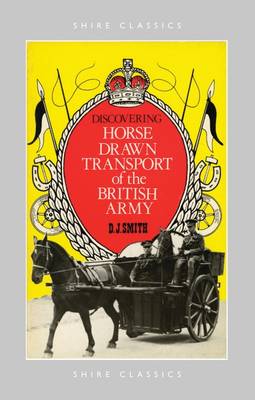Shire Discovering
3 primary works
Book 194
There is more than a touch of romance about a coach and horses, whether in a royal procession and drawn by a team of ornately harnessed greys, or a mail-coach clattering over the cobbles of an inn's courtyard, pausing to replace its steaming horses with a fresh team. In the eighteenth century regular stage-coaches linked London with principal towns, and although railways took over long-distance traffic in the nineteenth century, horse-drawn vehicles continued to serve as cabs, station wagons, omnibuses and private conveyances until their eventual replacement by motor vehicles. This book explores the various types and their history and employments, and is fully illustrated.
Book 233
Horse-drawn vehicles have played an essential role in the transport of military stores since ancient times, yet the British Army did not have a permanent royal transport corps until the Crimean War in the nineteenth century. Beginning from this period, this book explores the variety of horse-drawn vehicles used by the British Army, from the general service wagons and water carts, to the specialised horse ambulance and the travelling field cooker. Using line drawings to explain the equipment and construction methods, and illustrated with black and white photographs throughout, D. J. Smith reveals the vital role played by these wagons and carts for centuries until the introduction of motor vehicles in the World War I gradually superseded them.
Book 245
Until the reign of Queen Anne oxen were widely used for ploughing, and most other jobs on the farm, such as harvesting, were done manually by farm labourers. But at the beginning of the eighteenth century the Agricultural Revolution began. Oxen were displaced by horses for ploughing and the famous heavy breeds of Shires, Clydesdales and Suffolks developed. Horses were more versatile than oxen and came to be used for many tasks other than ploughing. Following the Industrial Revolution the ingenuity of Victorian manufacturers produced an enormous range of horse-drawn agricultural machinery - not just ploughs, but grubbers, cultivators, harrows, rollers, drills, reapers, binders, root lifters, manure spreaders, rakes and many other types - which continued in use until the tractor replaced the horse from the 1930s. In this book the author describes these machines and includes drawings of many of them, as well as photographs.


